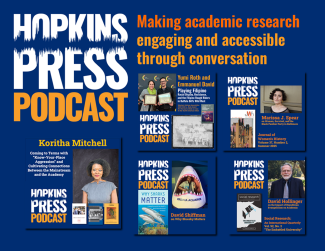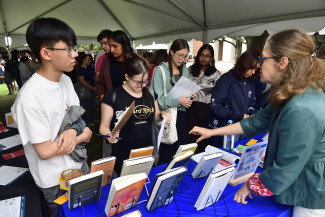Guest Post by Mark Osteen
A sharply creased fedora rests atop the oiled hair of a smart-talking detective, whose steely eyes gaze at a seductive blonde smoking a cigarette. When they kiss, a slinky jazz saxophone plays. Hat, blonde, smoke, jazz: these are the signature tropes of classic film noir. But there’s a problem: the jazz wasn’t really there. In fact, not a single 1940s noir and only a few from the ‘50s featured a jazz soundtrack. Nevertheless, as I argue in
Nightmare Alley, noir filmmakers used jazz to explore America’s shifting attitudes and anxieties about race, gender, sexuality, and violence, and to register the dissonances of a changing postwar world.
Film noir’s many nightclub scenes introduced viewers to an underground world of racial mixing, louche behavior, and unorthodox gender roles and sexual orientations. These associations color noir’s portrayals of white jazz musicians, who are typically depicted as sexually suspect and prone to madness and violence. Yet the films also betray a fascination with these figures who enact viewers’ repressed attraction to blackness and its (often stereotyped) tropes. In other words, white jazz musicians are “noired”—transformed into surrogate African Americans—in films like
Phantom Lady (1944) and
Black Angel (1946). However, later noirs, such as
The Strip (1951) and
Sweet Smell of Success (1957) present jazz not merely as a respectable way to make a living, but as an island of integrity in a continent of corruption.
Some films even find that jazz trumpets progressive ideals such as hybridity, emotional liberation, equality, and self-creation. The best examples of this strain are two movies in which the multi-talented Ida Lupino plays world-weary, resilient torch singers. Petey Brown, in
The Man I Love (1947), belies the title song’s lyrics: instead of submitting to her man, she leaves him, in order to emerge with her integrity and artistry intact. In
Road House (1948), Lily Stevens overcomes professional and personal obstacles by employing wit and husbanding her emotional resources.
These singers exemplify how jazz can be not merely a way of playing, but a way of living, in which improvisation serves as a survival technique suited for the modern world. Although few
noir films featured jazz scores, many used tunes from the Great American Songbook to evoke moods and reveal characters. Songs like “I’ll Remember April” (Phantom Lady), “I Hear a Rhapsody” (Clash by Night), “Your Red Wagon” (They Live by Night), “Never Let Me Go” (The Scarlet Hour) and “One for My Baby” (Road House), as well as the classic title themes from Laura and Body and Soul, comment powerfully on the action. In the 1950s and afterward, jazz soundtracks evoked urbanity and menace in films such as The Big Combo, in TV crime series such as Peter Gunn and Mike Hammer, and in neo-noir films like Chinatown.
If you’d like to hear these tunes and learn more about film noir, you’ll want to attend “Night Songs: The Music of Film Noir” on January 24
th, at
Germano’s Piattini. At this concert, I will show brief film clips and introduce the tunes; then my group, Cold Spring Jazz Quartet (CSJQ), will perform them. The show begins at 7:30 pm. Tickets are $10. To purchase a ticket and make a reservation, please call 410-752-4515. Afterward, you’ll be ready to walk those mean streets again.
To learn more about jazz and other themes in film noir, pick up a copy of
Nightmare Alley. Click here to find out more about
CSJQ. For the lowdown on what’s happening in Baltimore jazz, check out the
Baltimore Jazz Alliance.
 Mark Osteen is a professor of English, chair of the English Department, and founder of the Film Studies Program at Loyola University Maryland. His latest book Nightmare Alley: Film Noir and the American Dream is now available from JHU Press.
Mark Osteen is a professor of English, chair of the English Department, and founder of the Film Studies Program at Loyola University Maryland. His latest book Nightmare Alley: Film Noir and the American Dream is now available from JHU Press.



